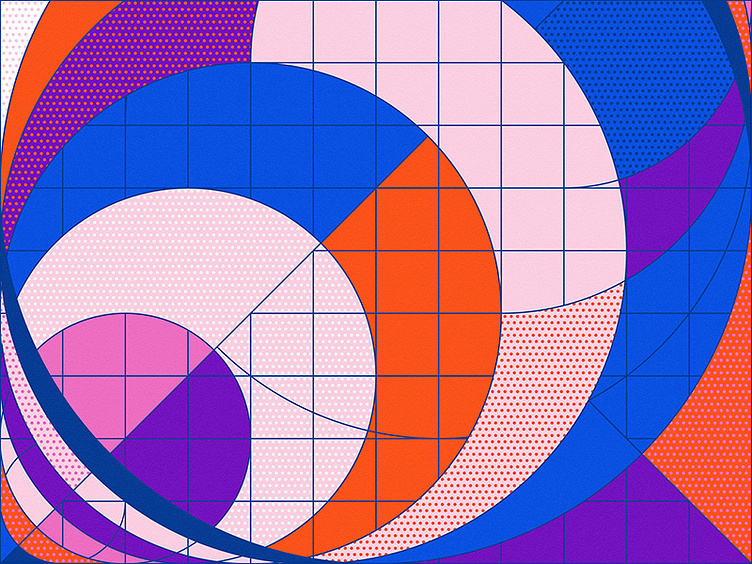Geometry + Patterns VIII
How do you talk about experimental abstract designs? Should you talk about the composition, colours, feelings these designs evoke? Or about the process you go through to get to a certain point when you can say that something is done? It’s easy to speak about and analyse the final work, but apart from the range of techniques and approaches you are using, sometimes it’s not that easy to record all of the decisions and the reasons behind them. When I’m experimenting everything I do is a conscious act, but it is an act of curiosity, asking the question ‘what if’ and trying, learning, changing, considering, undo-ing, bringing back, combining, remaking, and looking, seeing, analysing all the way through the process. You can go on developing your work forever and there might not be a definite point when to stop, so coming up with some rules and limitations (for example, time, number of elements or colours) for each design makes it easier to stop at certain points and reflect on what you’ve done and why. And after that, you can introduce new rules and carry on developing this work, or implement what you’ve just learned in the next work you do. But stopping from time to time, taking a step back, looking at your work and recording each iterations is crucial to be able to see (and show) your progress and how you develop over time. The end result is important, but what matters the most is the way you have arrived to it.
Today I decided to move on from centralised compositions and experiment with a diagonal arrangement of the elements: such a simple trick, but the composition looks more dynamic and has more depth to it. Now as I look at it, it somewhat reminds me of a view of a TV tower from below, or of a snail—the beauty of abstraction, neither were planned;)
